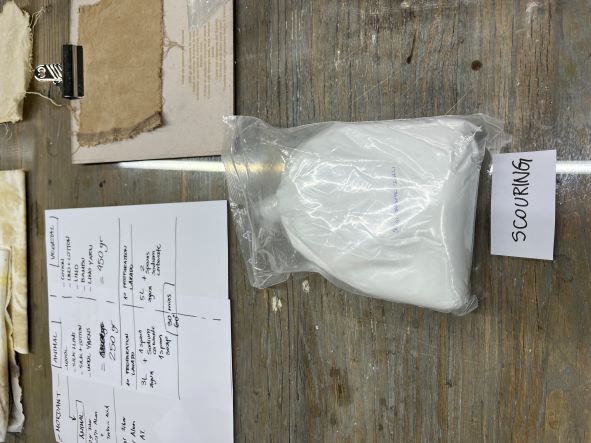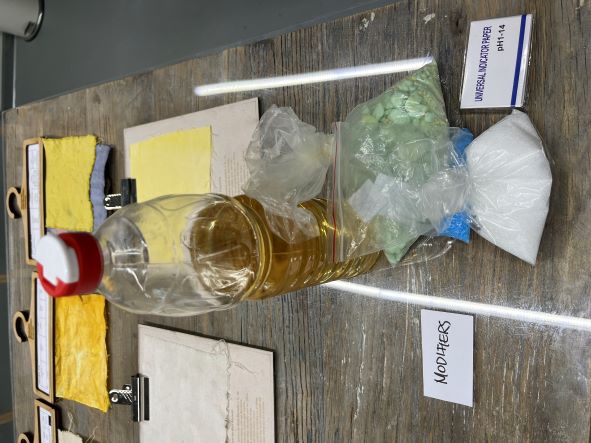4. BioChromes¶
Inspiration¶
Mushroom Color Atlas¶
It is impressive to discover the variety of colors that can be obtained from mushrooms. A very complete color palette.
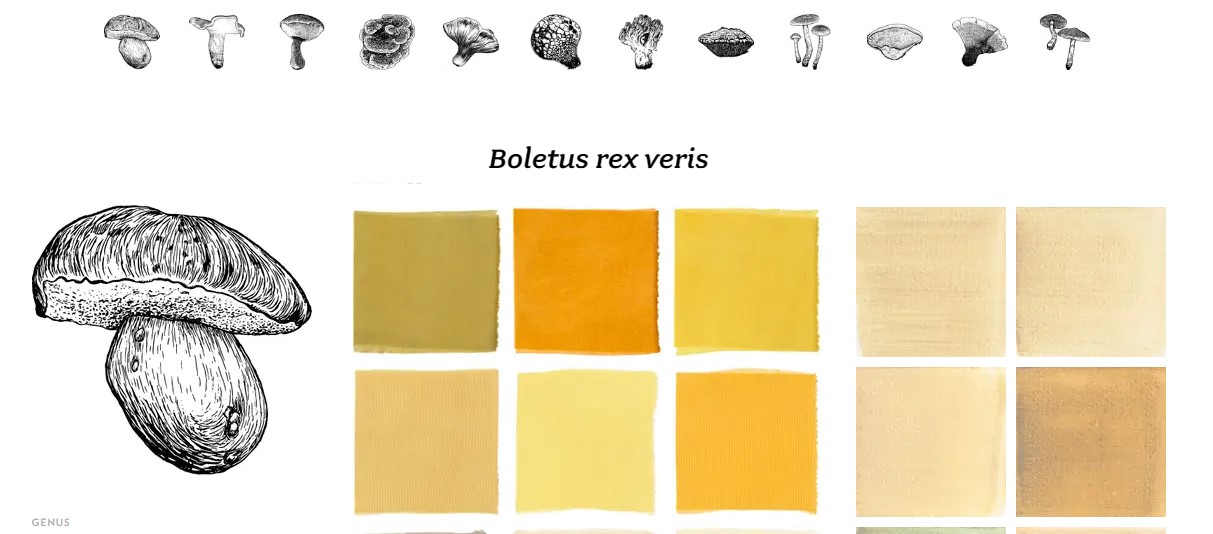
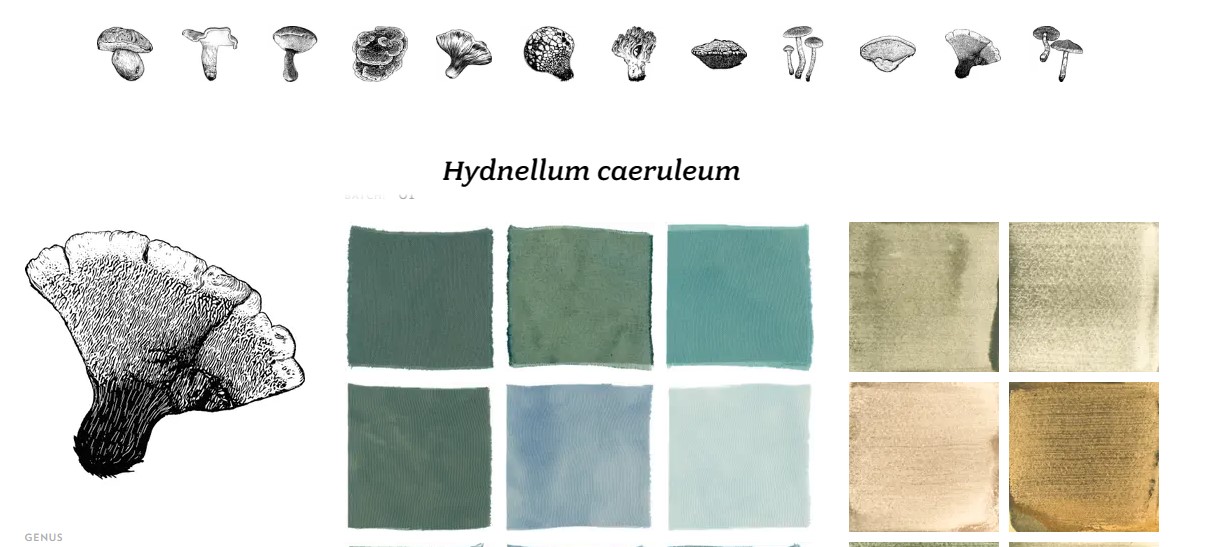

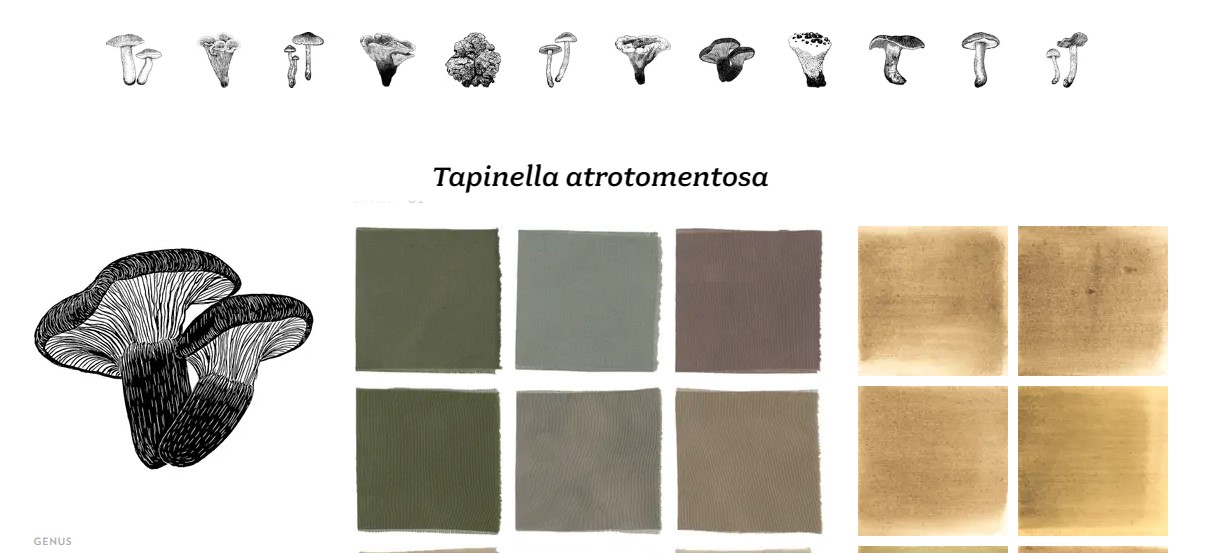
Miriam C. Rice¶
Miriam C. Rice was an American artist known for developing a palette of natural dyes extracted from mushrooms and other fungi.
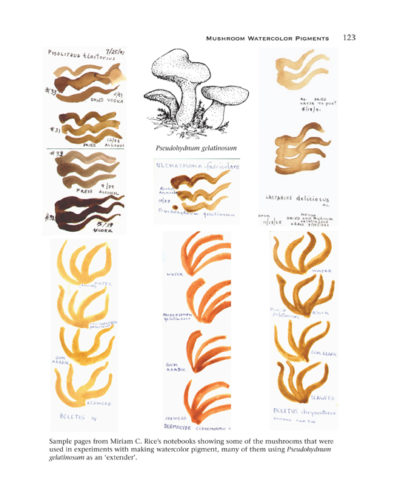
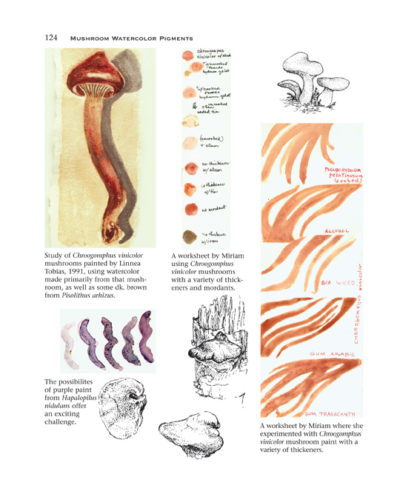
Her palette of discoveries ranged from yellow through ochre, orange, rose, and russet shades to burnt sienna and chocolate brown. She made many discoveries about mushrooms and their dyeing properties.
Mulhouse¶
The Museum of Printed Textiles aims to make known to as many people as possible the history, art and technique of printing onto textiles. On the one hand, the museum is dedicated to the birth of European textile printing in the 18th century. On the other hand, an impressive display of textile machinery from the 19th century and it´s implications on the textile industry are fully explained.
In 18th century, the engraved Wood block, used since the 14th century for pigments printing, dominates. The meeting between the proceeds of coloration from India provokes its development. Wood block printing is practiced in plenty of workshops until the middle of 20th century. It remains until 1980.
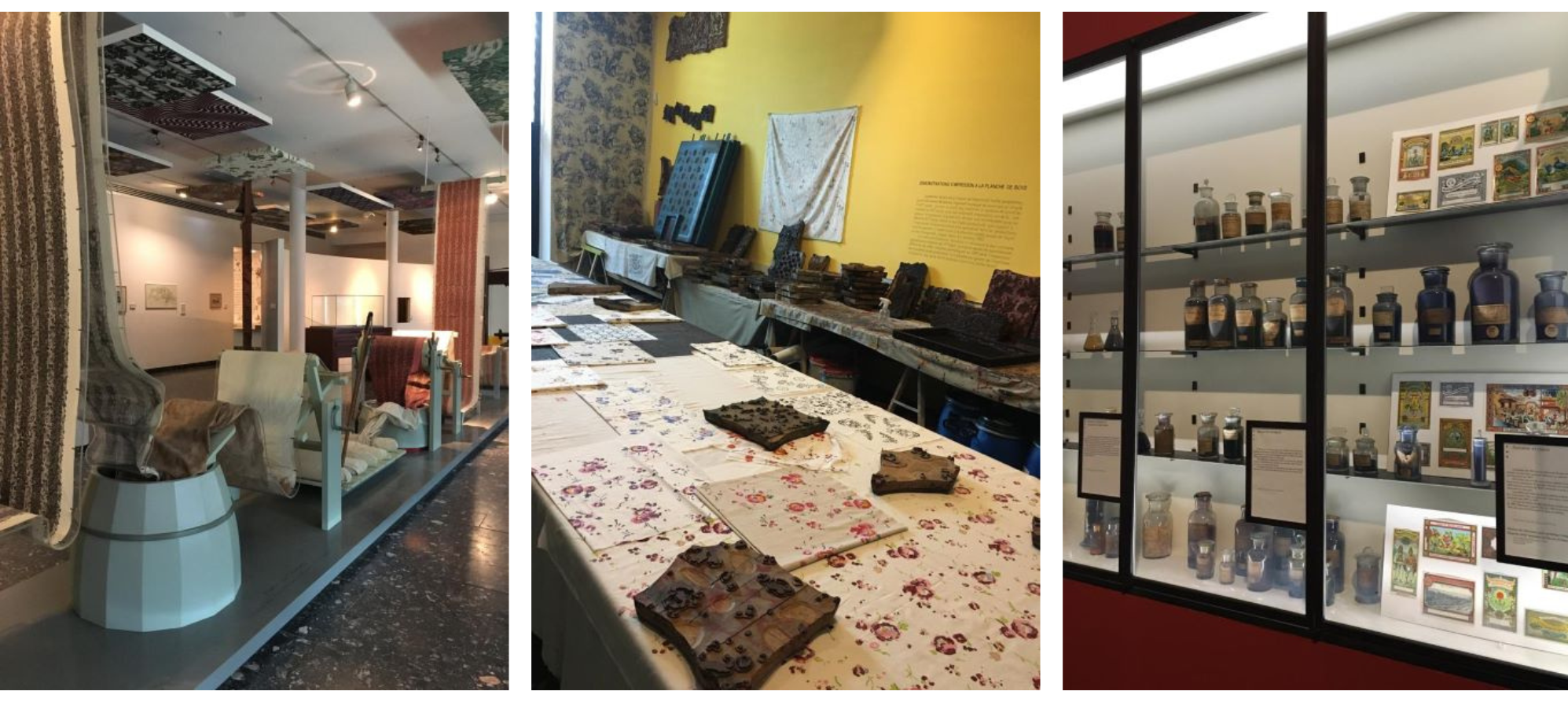
In 1769 Watt and Boulton invented the first steam driven machine. Unfortunately the high accident rate, coupled with heavy pollution slowed down it’s progress. The year 1783 saw the first patent for textile printing machine using engraved copper rollers. Thomas Bell, a Scotsman was it’s inventor. Fourteen years later, the textile manufacturer “Jouy en Josas” put into production the first copper roller textile printing machine in France.
I think it is important to know the origin of how it will develop to implement certain practices to start from that base and build towards a more sustainable future.
Natural Dyes¶
Fiber Selection
- Separate and differentiate the fibers that we will use in two groups.
- On the one hand, Vegetable: Cotton, bamboo, ramie, flax, hemp, jute, pineapple...
- On the other hand, Animal: Wool (sheep, angora, cashmere), silk, camel,alpaca mohair...
- The fibers of animal origin will provide us brighter, longer-lasting colors.
Scouring
- Wash both vegetable and animal fibers.
- Immerse the tissue completely and cook over low heat for 30 minutes to an hour. Stir occasionally.
- Dissolve the soda ash in a little water and then add the rest of the water you need in addition to soap.
- The fabric should be well covered with water and that can be moved easily inside the pot.
- Use a ratio of 1 teaspoon of soda ash or soda ash per 1L of water.
- Use a neutral ph soap.
Mordanting
- Allow the fabric to fully submerge in the mordant solution.
- Put 2 liters of water in a pot and add the mordant 8% of the weight of the fabric, and dissolve well by moving with a wooden spatula.
- When it has reached the boiling point, put the wet fabrics that you want to etch (in this case it will be 100 grams of fabric) and the leave for 40 minutes.
- Let the fabrics cool and they will be ready to put them in the dye.

Mordant options:
- Salt: dissolve 1 : 16 parts of water (less effective, more accessible)
- White vinegar: mix 1: 4 parts of cold water
- Copper or iron sulfate: 1% by WOF (fabric weight)
- Alum- 10% of the WOF (fabric weight)
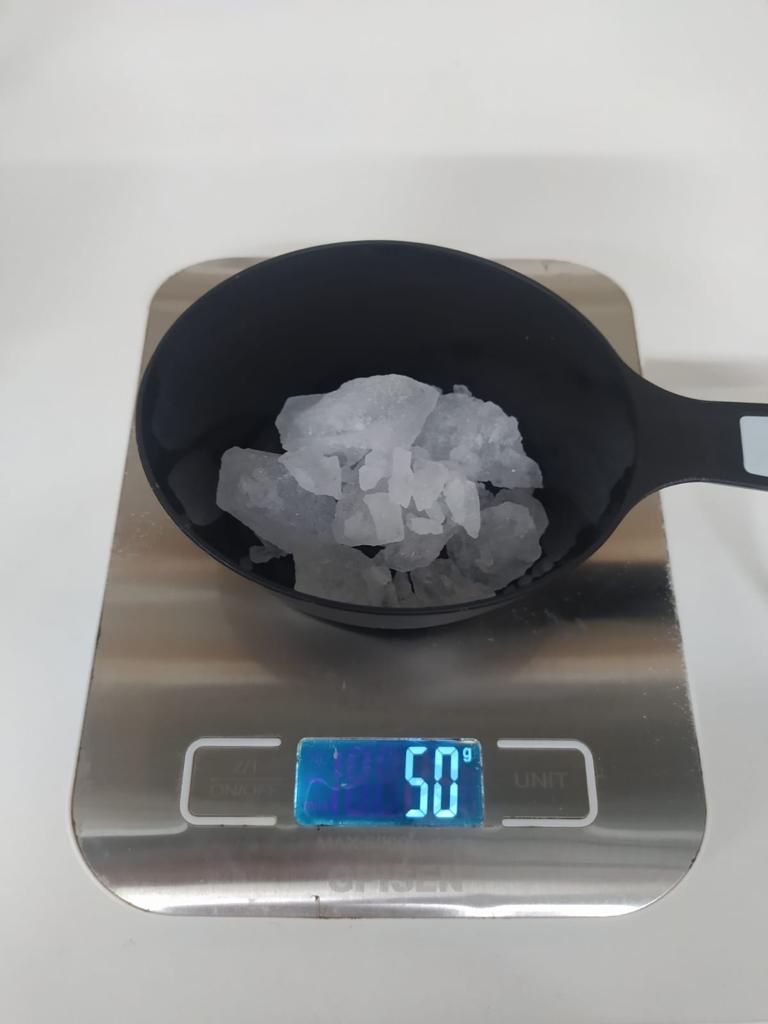
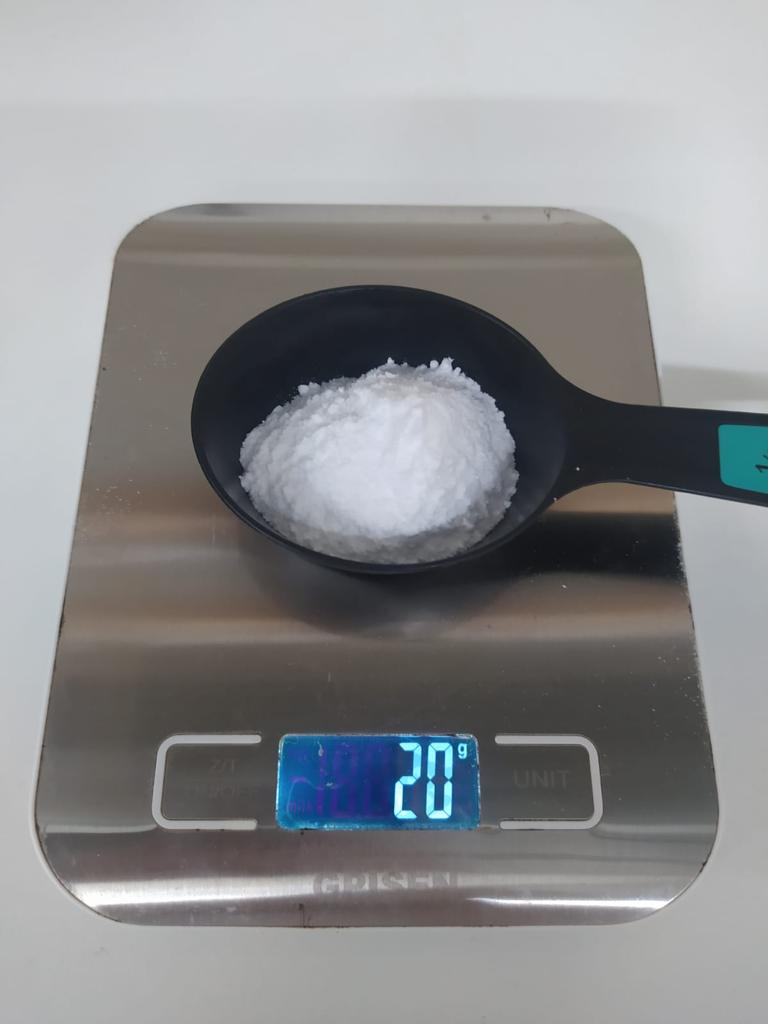
Alum 50g / Tartaric Acid 20g
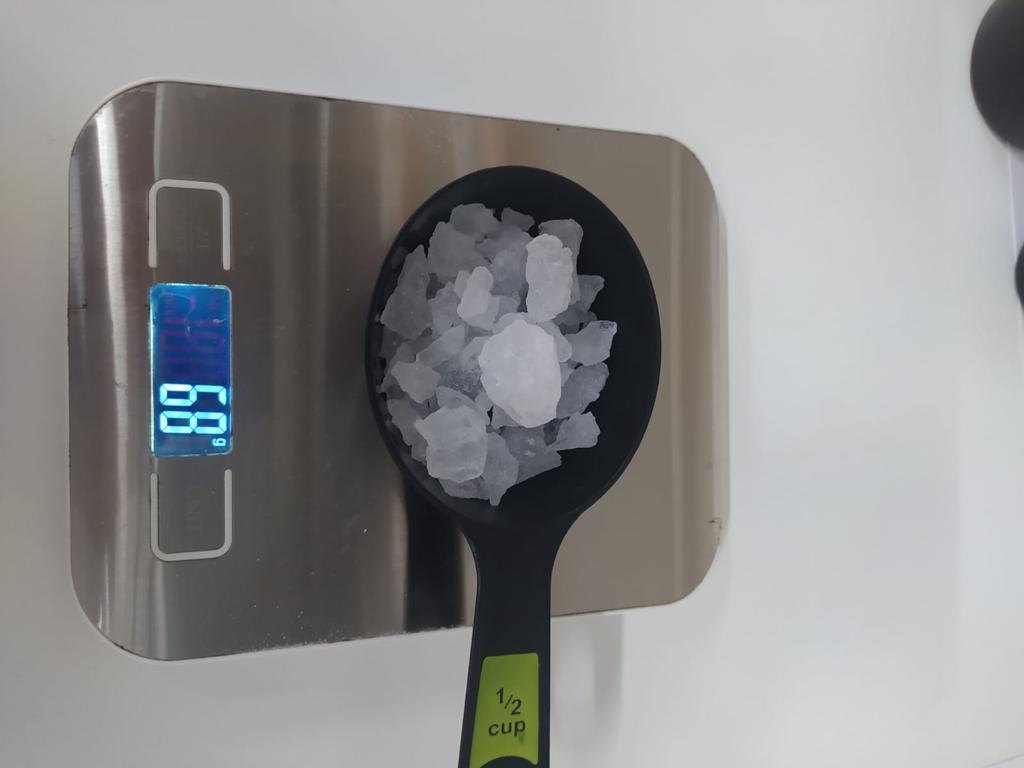
Alum 68g
Dye
- Choose a fruit or vegetable.
- Generally you have to boil for 1-2 hours the vegetables/fruits and then strain them, staying with the liquid that should be had.

Cochineal / Cúrcuma / Hibisco

Cochineal / Cúrcuma / Hibisco
Avocado¶

Recipe:
- Put 4 bones and avocado peel in a saucepan with 1 liter of water.

- Bring the saucepan to a boil, then let it simmer. The color it should start changing within half an hour.
- After the dye has acquired a deep enough color, you can turn down the heat (after 2 hours).
- Remove avocado pits and scraps, leaving nothing but the dye; this could help to achieve a more uniform color, since any fabric that touch the bones you might end up a different color.
- Let sit for several hours, stirring occasionally until you are satisfied with the color (I left my samples between 9 and 16 hours).
- Remove any cloth or threads with tweezers, rinse (with an optional mild soap) and let dry.

| Result | Fabric | Dye | Mordant | Time | Reaction |
|---|---|---|---|---|---|
 |
Wool, Linen, Silk | 4 bones and avocado peel | Vinegar 4 drops of pepper | 9-16h | Makes the shades colder |
 |
Wool, Linen, Silk | 4 bones and avocado peel | Iron 5gr | 9-16h | Tends to make the shades darker in tone |
 |
Wool, Linen, Silk | 4 bones and avocado peel | Copper 5gr | 9-16h | Tends to make the shades greener in tone |
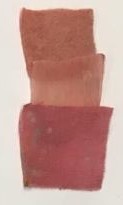 |
Wool, Linen, Silk | 4 bones and avocado peel | Citric Acid 6gr | 9-16h | Tends to make the shades warmer |
Boletus Erytropus¶
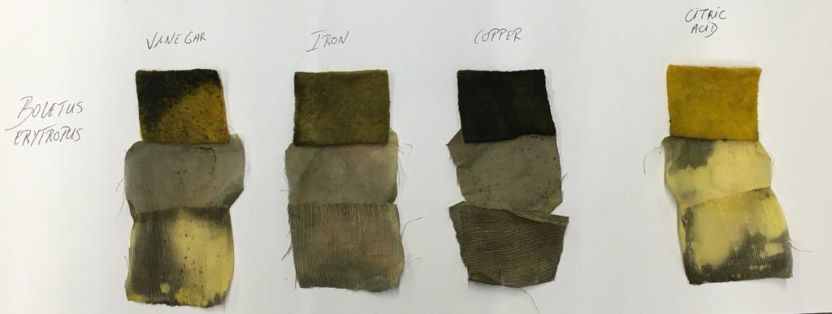

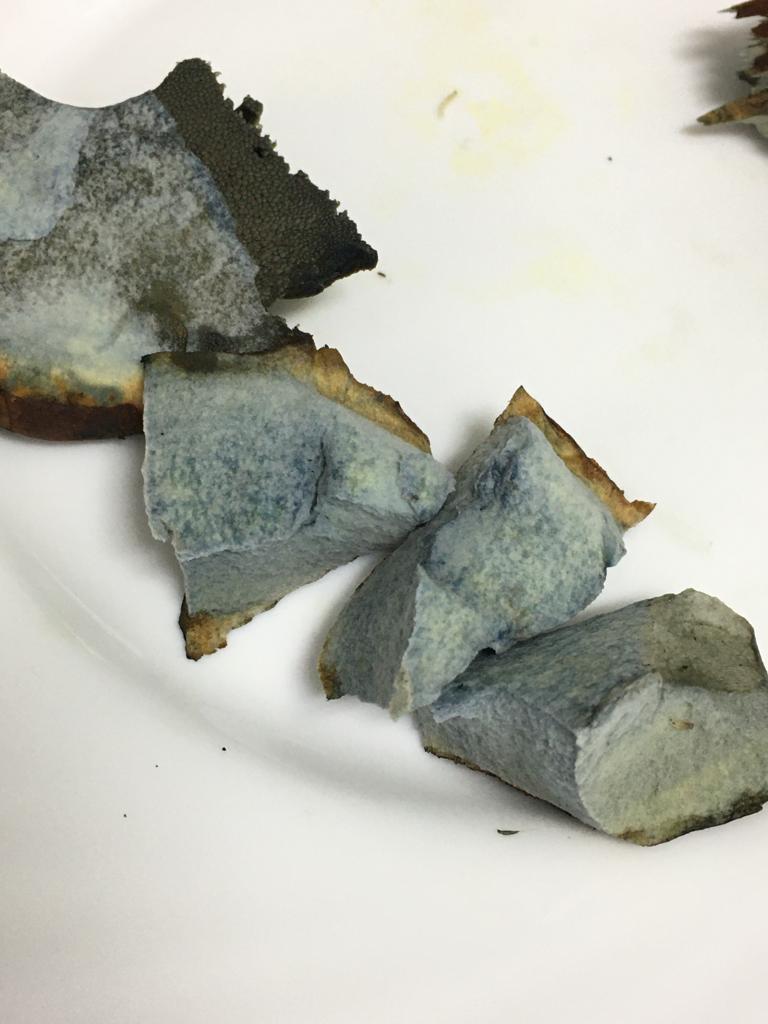
To get the dye of this type of boletus I have not found a bibliography or a recipe to follow. I have been guided by my intuition and followed the following steps.
Recipe:
- I have proceeded to extract the dye 3 days after taking the boletus in the mountains.
- I put 150 gr of boletus in 1l of water.
- I have cut the boletus into small pieces.
- Once the water starts to boil, I have put all the pieces and left it for 30 minutes.
- After that time, I lowered the heat and let it rest and cool.
| Result | Fabric | Dye | Mordant | Time | Reaction |
|---|---|---|---|---|---|
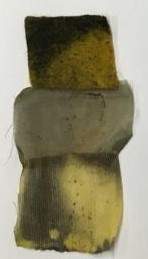 |
Wool, Linen, Silk | 150gr Boletus | Vinegar 4 drops of pepper | 9-16h | Makes the shades colder |
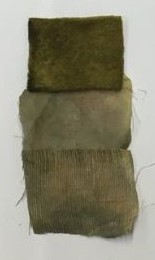 |
Wool, Linen, Silk | 150gr Boletus | Iron 5gr | 9-16h | Tends to make the shades darker in tone |
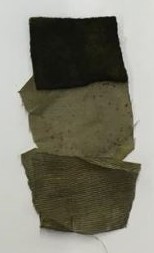 |
Wool, Linen, Silk | 150gr Boletus | Copper 5gr | 9-16h | Tends to make the shades greener in tone |
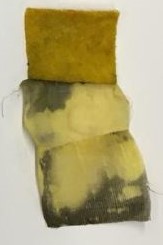 |
Wool, Linen, Silk | 150gr Boletus | Citric Acid 6gr | 9-16h | Tends to make the shades warmer |
Bacterial Dyes¶
This week we have had a visit from Jessica Dias and with her knowledge we have delved into how to make the bacterial dye.
I found it very interesting to work with the bacterial dyeing. I had never worked with bacteria in this way before and I loved it.
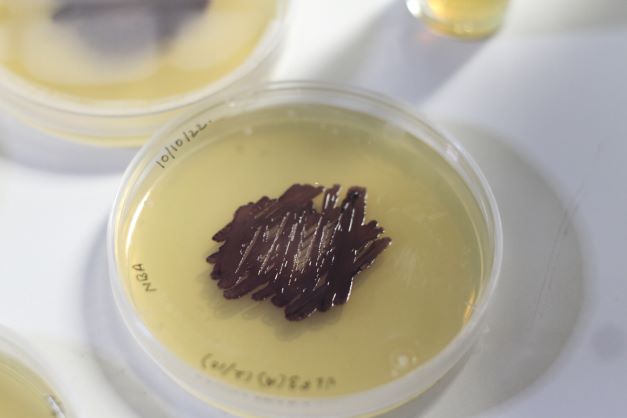

* 500ml glass bottle with cap that fits into the pressure cooker
* Nutrient broth NR1
* Nutrient Agar
* Pipette
* Glycerine
* H2O
* Pressure cooker
* Electric stove
* Petri dishes
* Inoculation loop
* Camping gas + lighter
* Parafilm tape
* Silk, cotton, linen
* Place the textiles in an autoclave bag for 121 degrees.
* Mix growing medium.
* Sterilize the textiles, petri dishes and growing medium in the pressure cooker.
* Sterilize working area with ethanol and the camping gas.
* Tag your petri dishes and pour growing medium.
* Place sterilized textile in the dish.
* Inoculate the dish with bacteria.
* Wearing gloves and a lab coat si safer
* Clean your hands after with ethanol and soap.
* No food or drinks around.
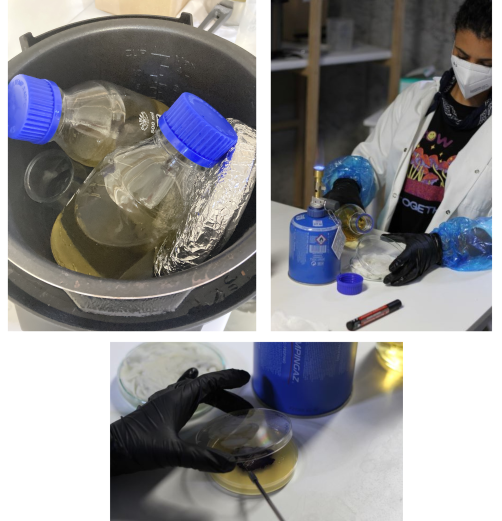
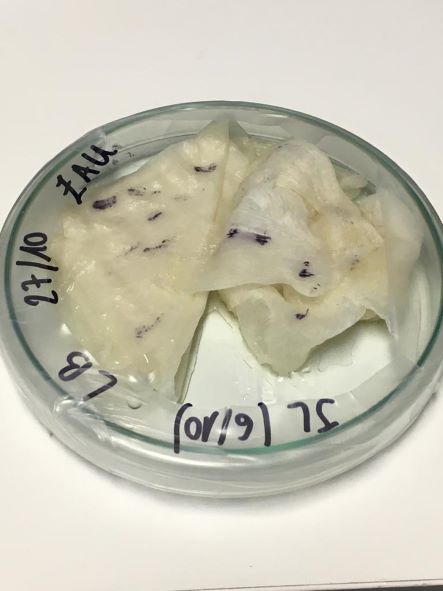
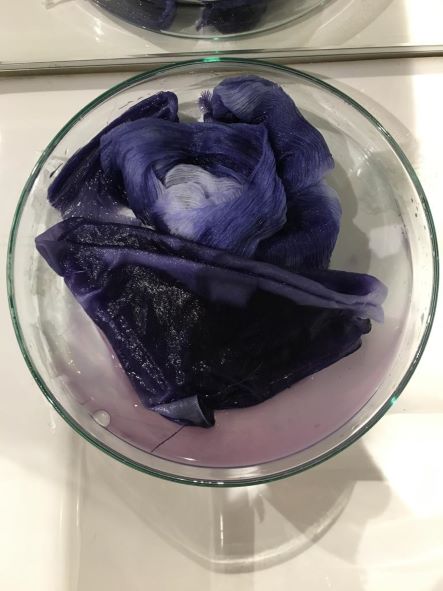
Final Result¶

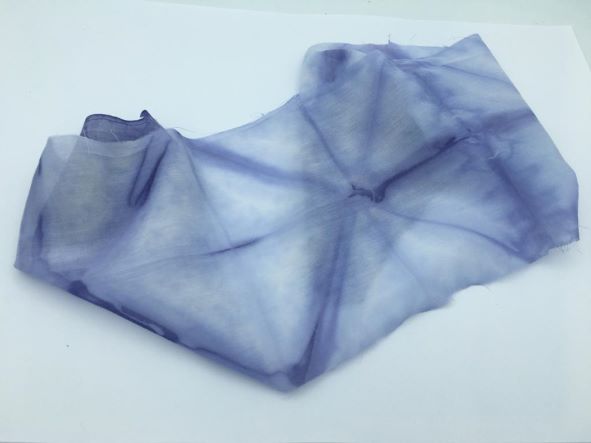
Here is a brief summary of our experience with bacterial dye at the Basque BioDesign Center.
